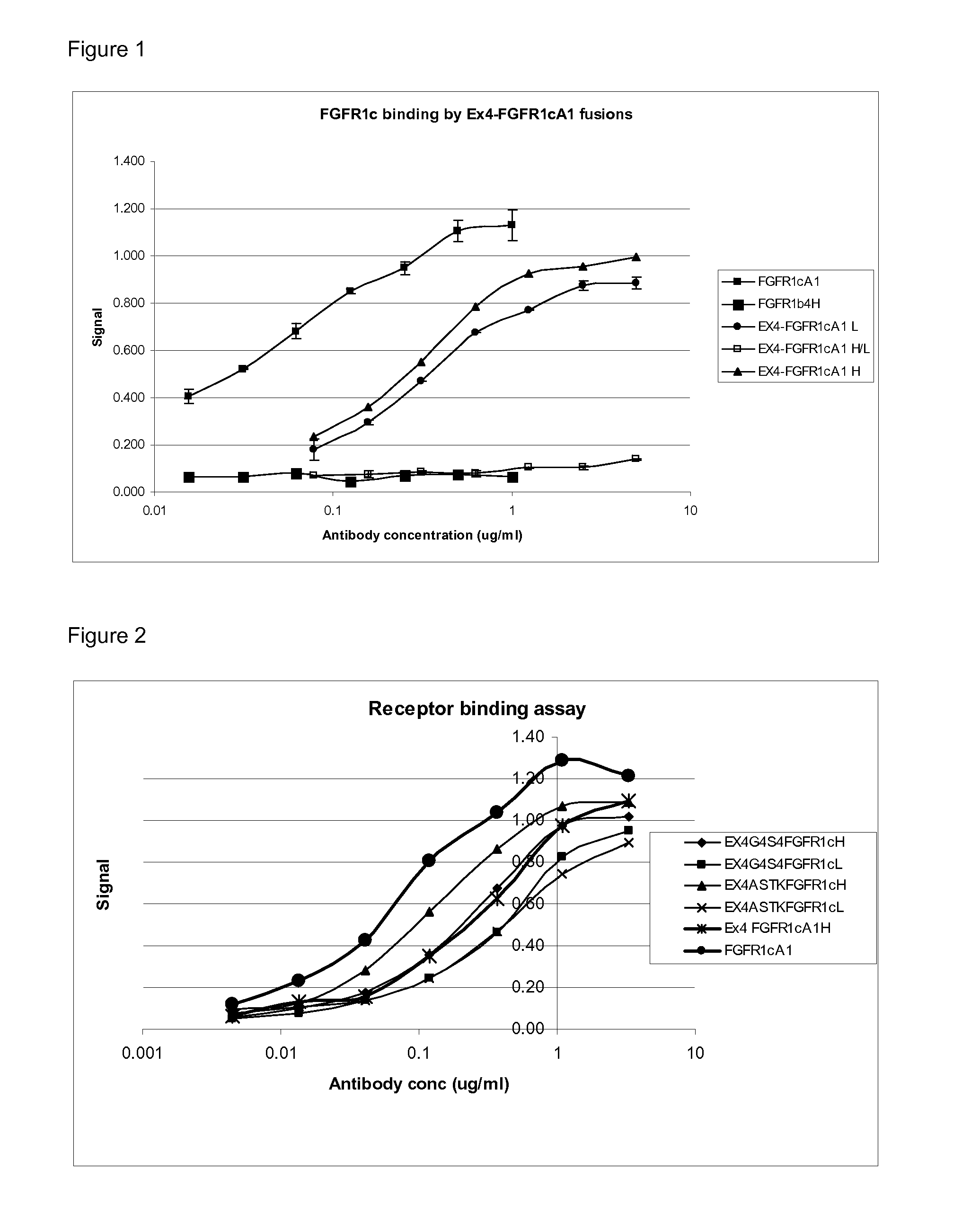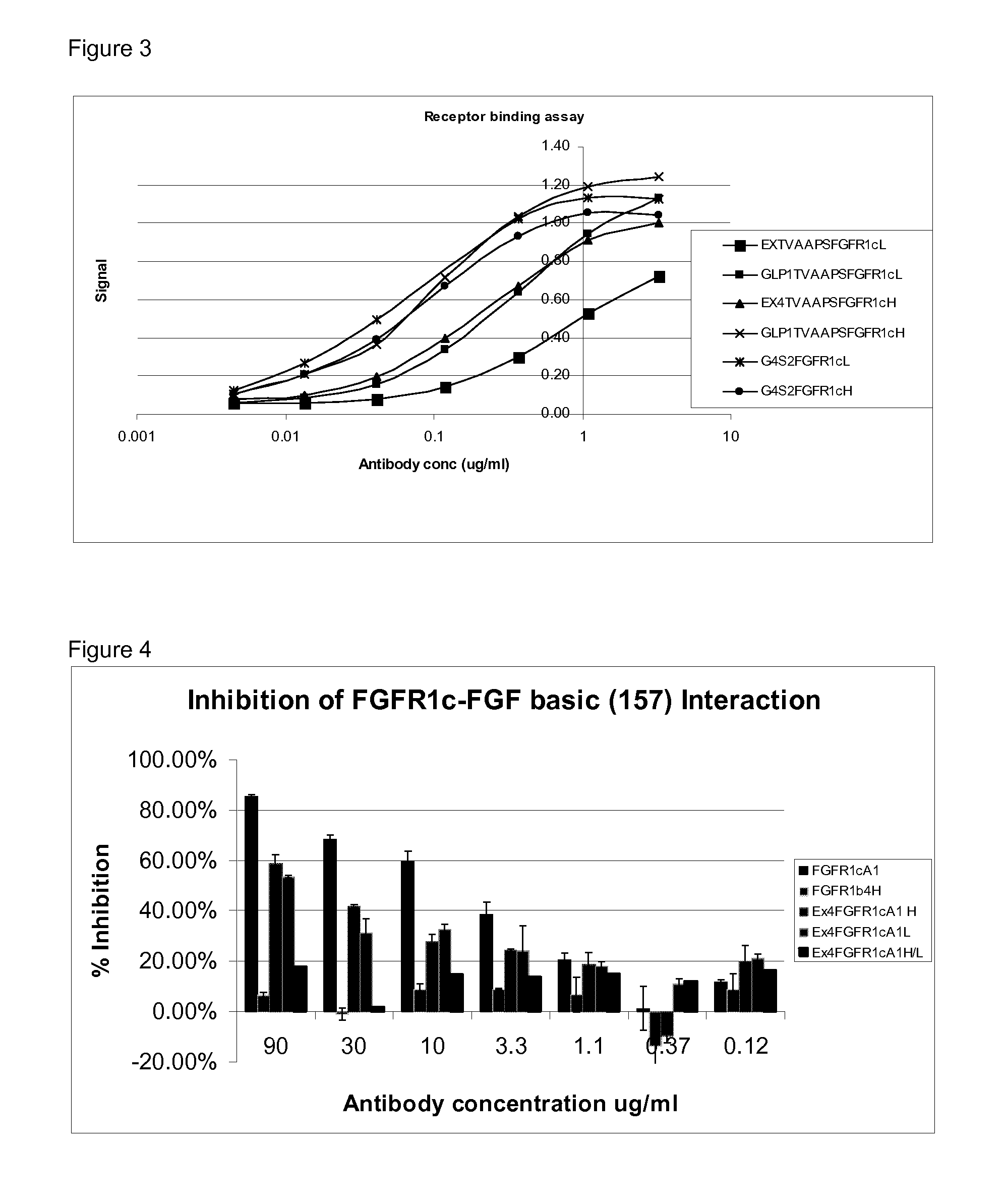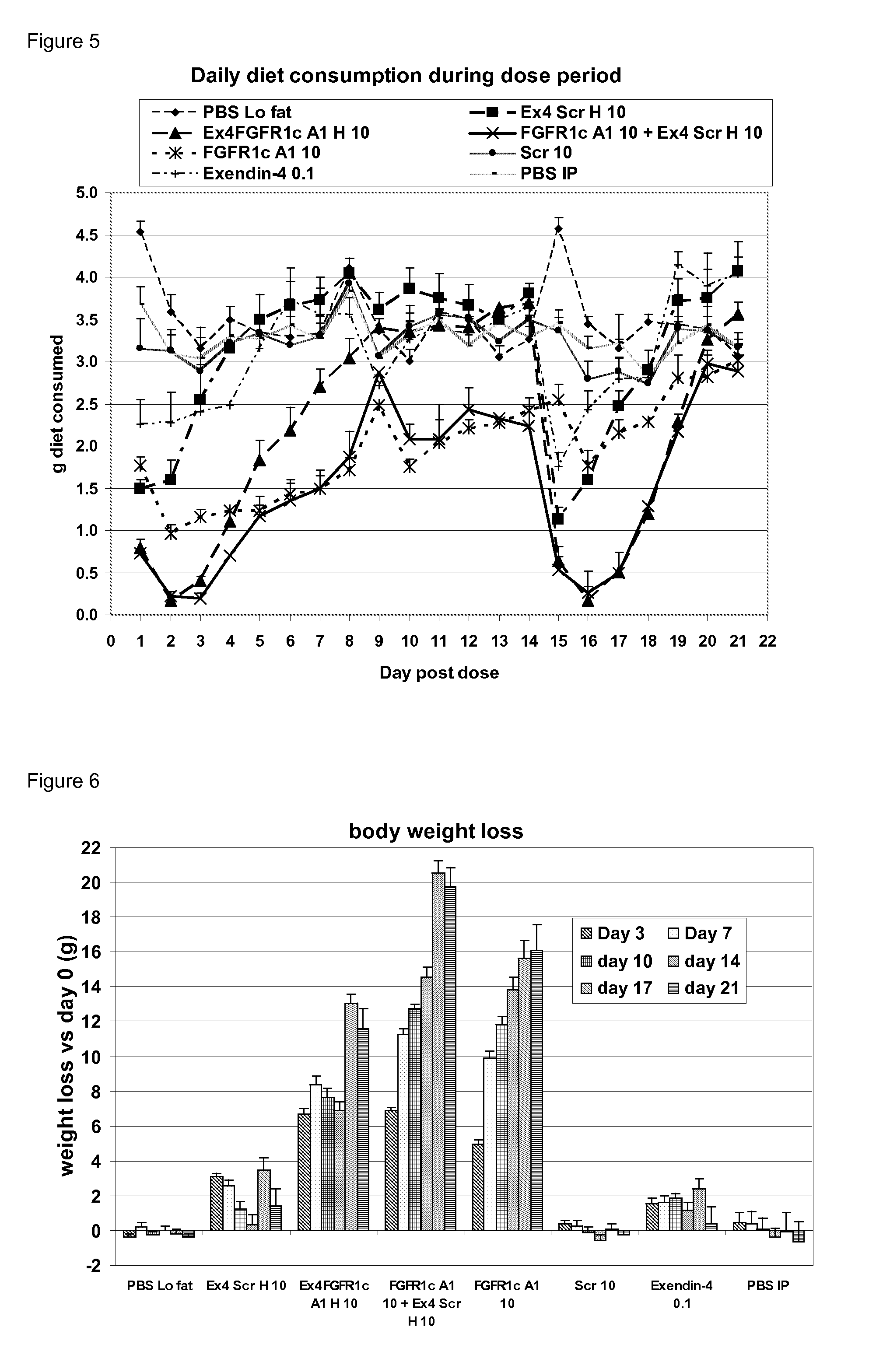Fgfr1c antibody combinations
a technology of fgfr1c and antibody, applied in the field of fgfr1c antibody combination, can solve the problem that it is not currently feasible to exogenously administer native glp-1 as a therapeutic treatment, and achieve the effect of reducing body weigh
- Summary
- Abstract
- Description
- Claims
- Application Information
AI Technical Summary
Benefits of technology
Problems solved by technology
Method used
Image
Examples
example 1
Construction of Dual Targeting Proteins
[0099]Design of Dual Targeting Proteins
[0100]Dual targeting proteins described herein were generated by linking a heavy chain and / or light chain of an anti-FGFR1c antibody via an optional linker to a GLP-1 agonist molecule so that the C-terminus of the agonist peptide was linked to the N-terminus of the heavy or light chain. The antibodies and antibody fusions were made by co-expression of heavy and light chains, and a list of these molecules are set out in table 1.
TABLE 1Heavy ChainLight ChainMolecule NameSEQ ID NOSEQ ID NOEx4-FGFR1cA1H124Ex4-FGFR1cA1L214Ex4-ScrH208 or 24Ex4-ScrL622GLP-1ScrH268 or 24GLP-1ScrL628GLP1ScrH / L2628GLP-1TVAAPSFGFR1cH164GLP-1TVAAPSFGFR1cL218Ex4-FGFR1cA1H / L1214
[0101]Two versions of the light chain of the scrambled mAb were made with one amino acid difference. These two sequences are set out in SEQ ID NO:8 and SEQ ID NO:24. The amino acid difference was not believed to have any effect on the resulting antibody. The two ...
example 2
FGFR1c Binding Assay
[0107]This assay was set up to test the binding of FGFR1c antibodies and dual targeting proteins of the invention to FGFR1c.
[0108]Assay plates were coated with recombinant human FGFR1c receptor (FGFR1c: Recombinant human FGFR1α (IIIc) / Fc Chimera R&D system) with 50 ul / well of receptor diluted to 1 ug / ml in coating buffer (0.2M Sodium Carbonate Buffer) and incubated overnight at 4° C. The plates were then washed 5 times with washing buffer (Phosphate Buffered Saline (PBS)+0.1% Tween20). Plates were blocked with blocking buffer (Phosphate Buffered Saline (PBS)+Bovine Serum Albumin (BSA) 1 mg / ml+0.1% Tween20) 100 μ / well and incubated at 37° C. in shaker incubator for a minimum of 30 minutes. The plates were then washed 3 times with washing buffer. Serial dilutions of test samples were made (3 fold dilutions) in blocking buffer and transferred to assay plates at 50 μl in duplicate. Plates were incubated at 37° C. in shaker incubator for 2 hours. They then were washed...
example 3
FGFR1c Receptor Binding Inhibition Assay
[0111]This assay was set up to test the inhibition of ligand binding (FGF) to its receptor (FGFR1c) in the presence of FGFR1c antibodies and dual targeting proteins of the invention.
[0112]Assay plates were coated with recombinant human basic fibroblast growth factor (FGF-basic 157aa) (R&D Systems #234-FSE / CF) at 4 μg / ml in coating buffer (0.2M Sodium Carbonate Buffer). 50 μl / well of this mixture was incubated overnight at 4° C. The plates were then washed 5 times with washing buffer (Phosphate Buffered Saline (PBS)+0.1% Tween20). Heparan sulphate proteoglycan (HSPG) in blocking buffer (Phosphate Buffered Saline (PBS)+Bovine Serum Albumin (BSA) 1 mg / ml+0.1% Tween20) at 1 ug / ml was added in 100 μl / well and incubated at 37° C. in shaker incubator for a minimum of 30 minutes (HSPG binding protects FGF from denaturation and proteolytic degradation).
[0113]The plates were then washed 3 times with washing buffer. Serial dilutions of standards and samp...
PUM
| Property | Measurement | Unit |
|---|---|---|
| time | aaaaa | aaaaa |
| time | aaaaa | aaaaa |
| time | aaaaa | aaaaa |
Abstract
Description
Claims
Application Information
 Login to View More
Login to View More - R&D
- Intellectual Property
- Life Sciences
- Materials
- Tech Scout
- Unparalleled Data Quality
- Higher Quality Content
- 60% Fewer Hallucinations
Browse by: Latest US Patents, China's latest patents, Technical Efficacy Thesaurus, Application Domain, Technology Topic, Popular Technical Reports.
© 2025 PatSnap. All rights reserved.Legal|Privacy policy|Modern Slavery Act Transparency Statement|Sitemap|About US| Contact US: help@patsnap.com



